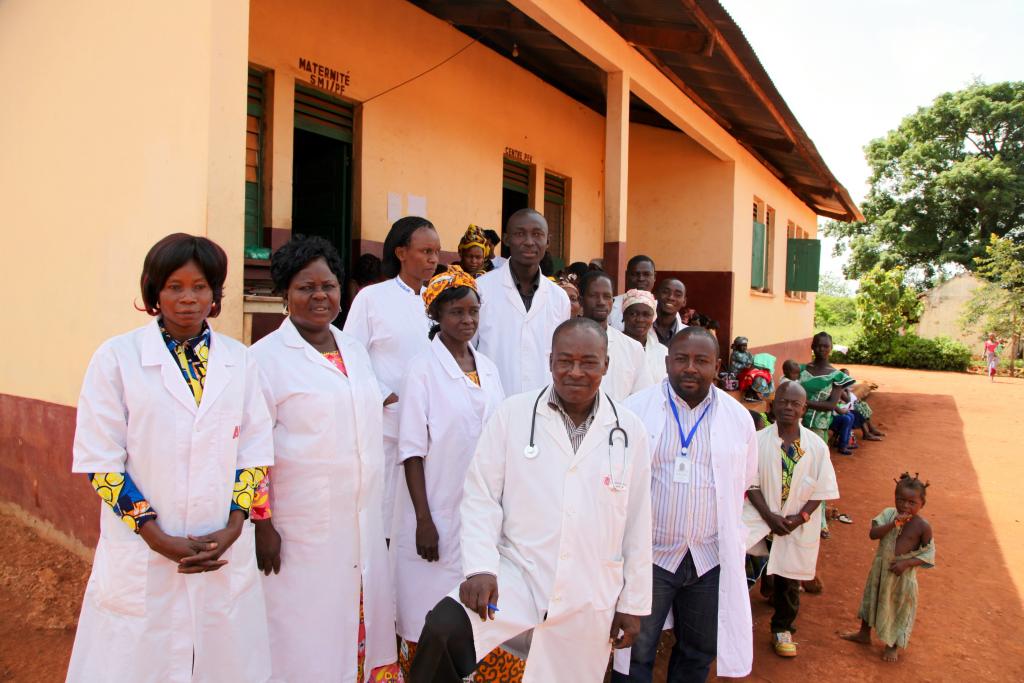If you saw a child being abused, what would you do? You would intervene, of course! Wouldn't you? Or would you consider it someone else's responsibility?
In 2016, World Vision transitioned from its six-year global health campaign to a new campaign, one to end violence against children: It Takes a World. The organisation’s leaders now had the challenge of considering how our health and nutrition work could contribute meaningfully to addressing violence.
This happened at the same time that the World Health Organization (WHO) was approving their INSPIRE Framework: Seven Strategies For Ending Violence Against Children, as well as their Global Plan of Action to strengthen the role of the health system within a national multisectoral response in addressing interpersonal violence, in particular against women and girls, and against children. With these documents, the WHO and its Member States affirmed that violence against women and children represents a major underlying cause of morbidity and encompasses “a wide range of adverse physical, psychological, reproductive and behavioural outcomes”.
World Vision defines violence as “all forms of physical, sexual and mental violence, neglect or negligent treatment, maltreatment or exploitation, harm or abuse, including commercial sexual exploitation, trafficking, child labour and harmful practices, such as female genital mutilation/cutting and child marriage”. Reflecting on this definition, it became clear to us that we had, in fact, been addressing violence issues all along, through such initiatives as our interpersonal therapy for groups approach, psychosocial care, addressing early marriage as a foundational incubator of poor health outcomes and more.
This year the WHO and UNICEF will launch the Nurturing Care Framework at the 71st session of the World Health Assembly (WHA). This framework further cements, in two ways, the health sector’s role in addressing violence. First, it places health and violence side by side in its conceptual framework of holistic developmental factors required for positive early child development. Second, it suggests that the health sector has a privileged role to play in addressing these holistic needs for the pregnancy to three years cohort because this cohort is most engaged by health workers. For example, in a randomised control trial in Peru, World Vision found that physical mistreatment in the 0-36 month cohort decreased from 14.2% to 8.6% in one year as a result of community health workers making household visits to address malnutrition. When we integrated our health interventions in Nepal with education, child protection, faith actors and advocates, we saw a 70% reduction in early marriage incidence.
Going into this year’s WHA, we have reviewed how 24 countries have been aligning to the WHO Global Plan of Action and are happy to see that health policies are increasingly sensitive to issues of violence against children and women. For example, Burundi’s Politique Nationale de Santé 2016-2025 explicitly addresses violence issues throughout the life course. This includes prevention and response to child, early and forced marriage, sexual violence, female genital mutilation, and physical violence. Kenya’s Health Policy 2014-2030 contains a specific objective to reduce the burden of violence and injuries and scale up psychosocial rehabilitation services to address long-term effects of violence and injuries. These services are included in their essential health package, as are pre-hospital care and community management of violence and injuries.
Moving forward, it is clear that “universal” health coverage must comprehensively address violence against children, and that health sector actors have both a direct role to play in ending violence, as well as a need to collaborate closely with other concerned actors. We will not achieve the health-related Sustainable Development Goals so long as the current level of violence continues, implicating one billion children every year. Violence is not someone else’s concern – it will take the health sector to end it.
Written for the GHC Newsletter by Dan Irvine, Senior Director – External Engagement, Health and Nutrition, World Vision International


